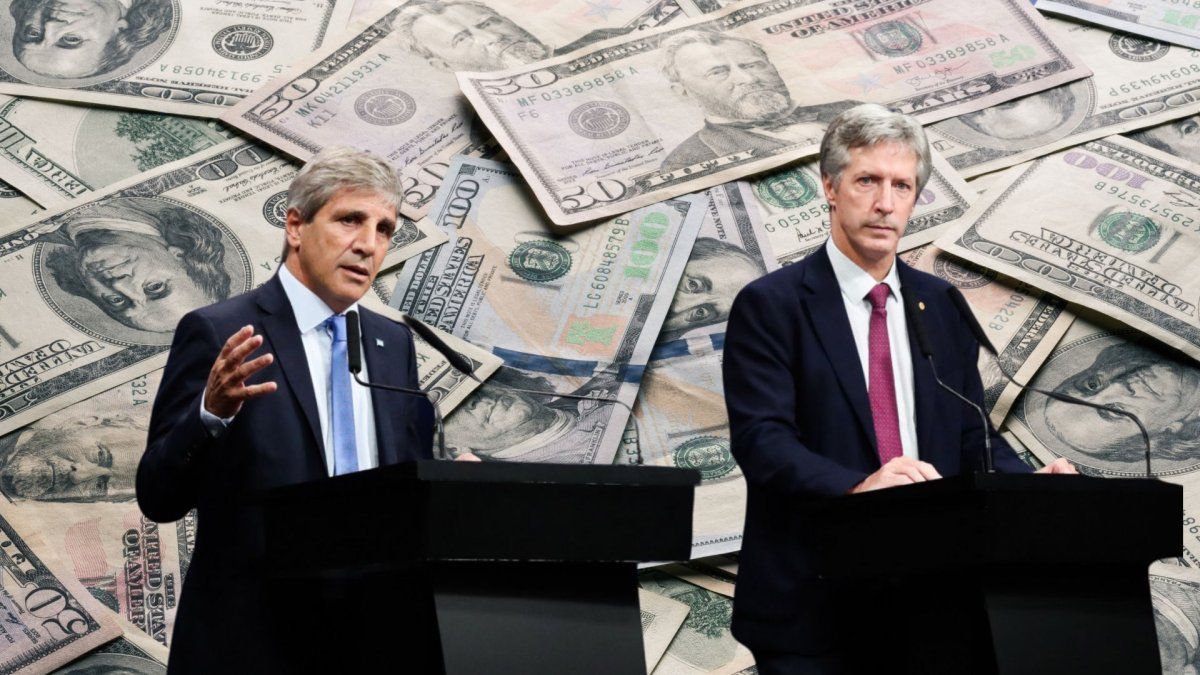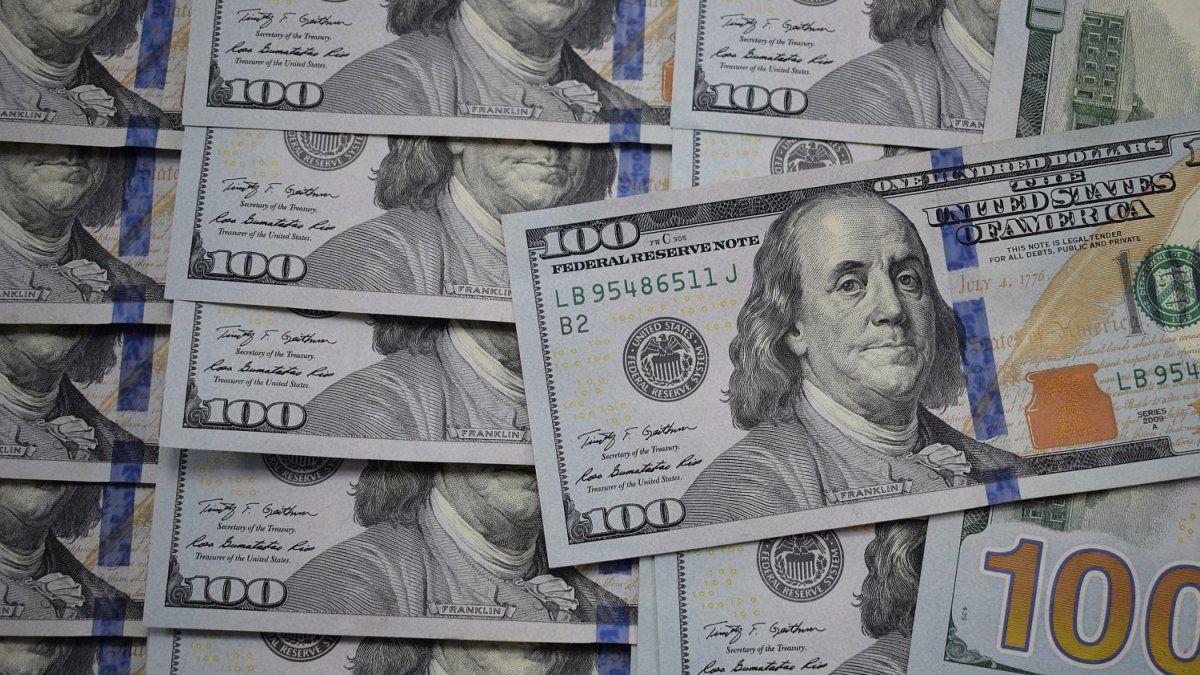Ten days from elections legislative elections of October 26, the exchange rate band regime faces a challenge which puts its main function in check: the containment of expectations. While the Government reaffirms its commitment to the scheme – with a ceiling close to $1,500 per dollar –, market indications show a growing imbalance.
In fact, the scheme seems to work with several anabolicsfrom short-term interest rates that, from time to time, reach 200% annually, loans from the IMF to increase reserves and even a Treasury Palace that has shown itself willing to disburse the few dollars it had saved as long as the price does not escape. Now, the intervention of the US Treasury is added. The fact is that the demand for foreign currency absorbs all the available supply.
For the Government, this dynamic is exclusively due to the proximity of the election. The president of the BCRA said it just a few hours ago, Santiago Bausili. At the Atlantic Council in Washington, the official defended the calibration of the bands as “appropriate and in the process of gradual widening”arguing that the current demand for exchange coverage responds to a “disproportionate pre-election shock” that will dissipate once October 26 is passed.
An infernal figure, Washington’s wallet
The definition is not minor. The Government thinks that. once the election is over, the demand for dollars will subside. And he analyzes that the exchange rate band scheme will continue its course, that no modifications will have to be made. They are betting on that happening.
So much so that, To maintain the exchange rate scheme, an unprecedented response has been forced from Washington: a massive intervention by the US Treasury in the local exchange market, aimed at preventing an abrupt devaluation that could implode the entire creed of the economic team.
What happened yesterday illustrates the seriousness of the situation. Despite a series of explicit endorsement announcements from US Treasury Secretary Scott Bessent – including public praise for fiscal discipline, potential syndicated loans with banks, and applause for the Milei adjustment during a forum in New York – the exchange market bought all the dollars it could or, rather, the United States bought all the pesos that they wanted to sell to it.
Thus, market agents, interpreting the official exchange rate as far from its equilibrium value, responded with an indiscriminate purchase of foreign currency, exhausting settlements in the Single and Free Exchange Market (MULC).
In this context, the US Treasury opted for a direct stabilization operation: the injection of fresh dollars, accompanied by the corresponding acquisition of pesos, with the aim of cushioning the gap and preserving the credibility of the regime. Preliminary circulating estimates calculate that The volume of dollar sales by the Treasury exceeded US$500 milliona figure that, if confirmed, would represent the most significant intervention by an external partner in the Argentine market since the IMF bailouts in the last decade.
This action, coordinated with the Central Bank of the Argentine Republic (BCRA), not only reflects the growing interdependence between local monetary policy and the geopolitical priorities of the Trump administration, but also highlights the vulnerability of the banding scheme to transitory shocks.
“We do not anticipate modifications in the regime,” emphasized Bausili, aligning himself with the official expectation that the framework agreement for the swap with the Federal Reserve – for up to US$20,000 million, in the final documentation phase – will be activated in the next two weeks, thus reinforcing the Central Bank’s capacity for intervention.
Forced recalibration: the market will have the last word
However, this view contrasts with several readings. The Treasury’s intervention is seen as a symptom that the market has already issued a verdict: the exchange rate does not reflect a sustainable balance – it does not alleviate the external sector -, and a relative defeat of the ruling party at the polls could precipitate a forced recalibrationeither through an adjustment to the ends of the risers or a transition to more free floating.
The question that underlies this scenario – and that redefines the role of actors in exchange management – is whether, for the first time in the Milei era, The final decision on the post-election dollar will escape the control of the Executive and the US Treasury to fall back on market forces. In the case of the US Treasury, it is clear that it has infinite dollars, but it has also become clear that it does not plan to use them.
Historically, in contexts of high uncertainty such as Argentina, investor expectations have acted as a catalyst for inevitable adjustments, amplifying pressures that authorities are unable to contain with announcements or specific injections.
An electoral result that consolidates the ruling party – with at least 35% of the votes and progress in pivotal districts – could validate the official thesis of transience, allowing the swap and the bands to remain intact.
Instead, a very poor performance would exacerbate massive dollarization, draining reserves and forcing drastic choices: from an increase in the price of the floor and ceiling of the bands to a jump of 20-30% in the exchange rate, with repercussions on monthly inflation that would reverse the accumulated achievements in fiscal discipline.
External conditioning aggravates this dichotomy. Bessent’s support, although concrete in rhetorical terms, is part of Washington’s doctrine of prioritizing stable allies: The flow of liquidity, including possible additional contributions from private banks for another US$20 billion, will be tied to a victory that guarantees legislative majorities for pending reforms.
Without that shield, Wednesday’s intervention could be repeated, but with diminishing margins, leaving the market as the undisputed arbiter.
In the domestic sphere, the internal frictions of the ruling party – manifested in the negotiations of the Chief of Staff, Guillermo Francos, with sectors of the Macrismo, and in the tensions between the advisor Santiago Caputo and the Chancellor Gerardo Werthein – do not facilitate a united front in the face of the exchange rate vertigo.
The prospect of a restructuring of the Cabinet after October 26, according to indications attributed to the presidential environment, points to a reorganization that privileges the coalition, but that could delay agile responses if the market imposes its time.
Source: Ambito




